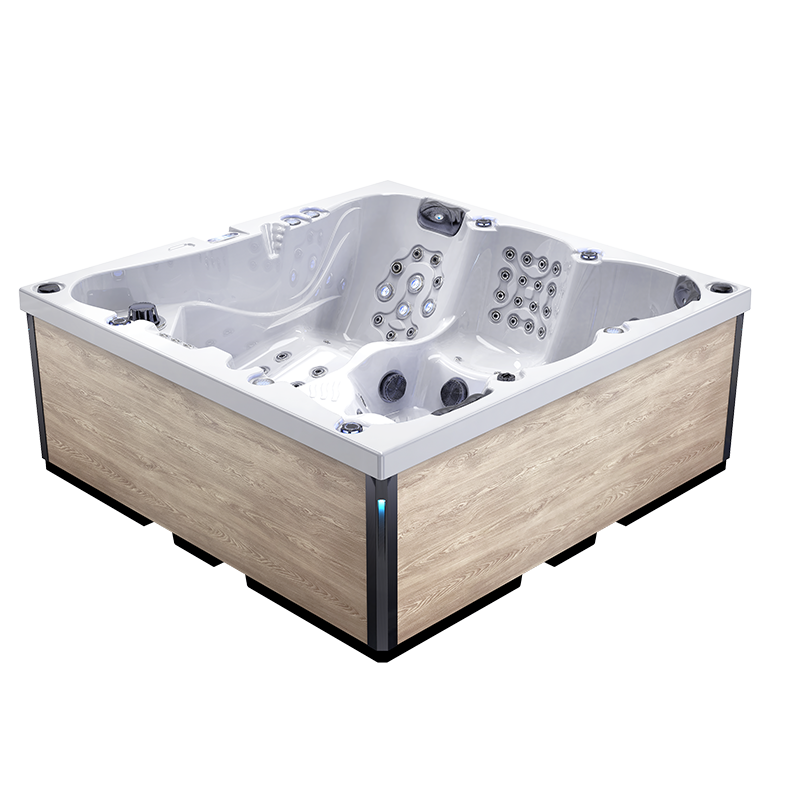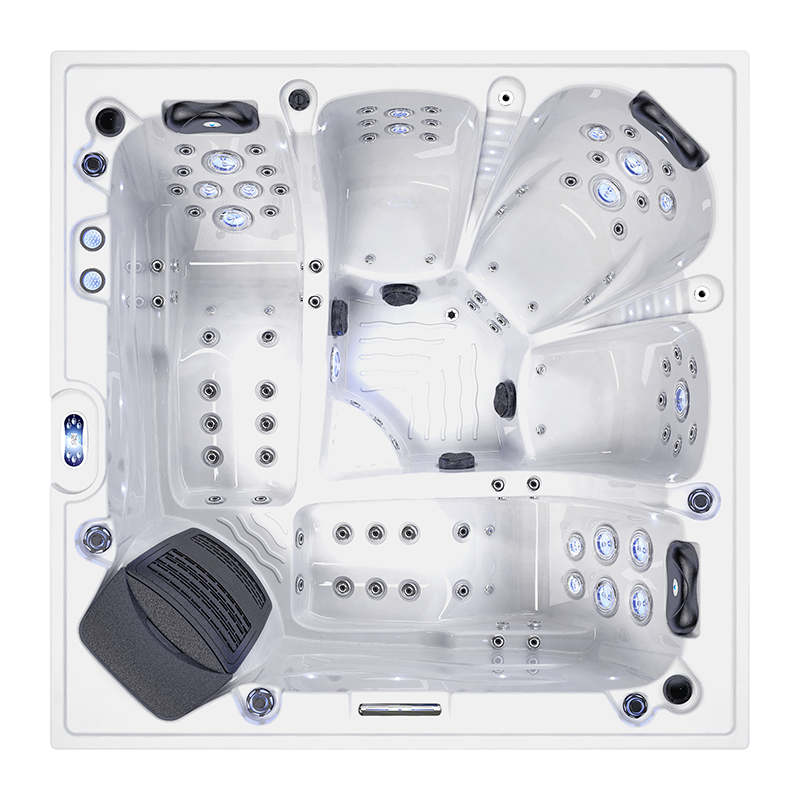
How can outdoor hot tubs cope with different climate conditions?
2024-02-27 15:30Outdoor hot bathtubs are devices that provide a relaxed and comfortable spa experience, but they need to tackle various challenges in different climate conditions to ensure continuous provision of optimal functionality and comfort. This article will explore how outdoor hot bathtubs can cope with different climate conditions, so that you can better utilize this equipment, whether you live in cold winter or hot summer.
1. Cold winter
In the cold winter, outdoor hot bathtubs need to face low temperatures and possible snowfall. Here are some coping strategies:
Reinforced insulation: Use high-quality insulation materials to ensure that heat is not easily dissipated. This can reduce energy consumption and maintain stable water temperature.
Using a heating system: Choose a hot water tub outdoor with an efficient heating system, such as an electric heater, gas heater, or heat pump. These systems can maintain water temperature at low temperatures.
Covers and lids: Use covers and lids with good sealing performance to prevent snow or frozen air from entering the water.
Regular maintenance: Check and maintain the heating system of the hot water bathtub more frequently in winter to ensure its normal operation.

2. Hot summer
In summer, outdoor hot bathtubs may face high temperatures and direct sunlight exposure. Here are some suggestions:
Sunshade equipment: Use sunshade equipment or obstructions to prevent excessive exposure of the hot water bathtub to sunlight, in order to prevent the water temperature from rising too high.
Chemical balance of water: In hot weather, check the chemical balance of water more frequently and disinfect it to avoid bacterial growth.
Windshield: In areas heavily affected by wind, the use of windshields can be considered to maintain stable water temperature.

3. Wet and rainy climate
In humid and rainy climate conditions, humidity and water treatment may become issues. Here are some suggestions:
Moisture resistant materials: Choose moisture resistant materials to ensure that outdoor hot water bathtubs are not easily affected by moisture and corrosion.
Covering and maintenance: Use coverings to prevent rainwater from entering, and regularly inspect and clean spa equipment to prevent bacterial growth.
Ventilation: In high humidity areas, ensure appropriate ventilation to reduce the impact of moisture on equipment.
The response of outdoor hot bathtubs to different climate conditions requires a series of measures, including insulation, heating systems, shading equipment, water chemical balance, and regular maintenance. The correct handling method can ensure that hot water tub outdoor continue to provide a pleasant spa experience under different climatic conditions, without being disturbed by external environments. No matter what climate conditions you live in, proper maintenance and management will make your hot water tub outdoor the ideal choice for your family's leisure.
